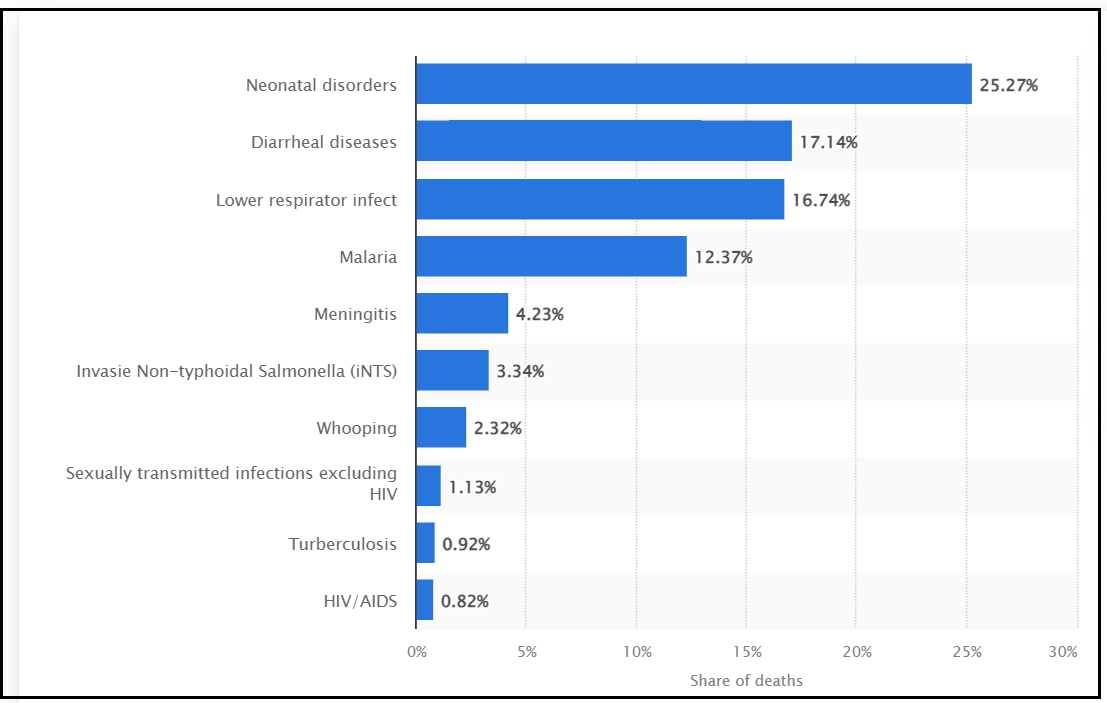Child mortality is a critical global issue before civilization and therefore, it has been included in the Sustainable Developmental Goal 3.2 (SDG 3.2, Newborn and child mortality) in the United Nations Development Programme under two categories, 3.2.1 (Under-5 mortality) and 3.2.2 (Neonatal mortality). The target for 3.2 is to reduce neonatal mortality and under-5 mortality to at least as low as 12 and 25 respectively per 1,000 live births by 2030.
Commendable progress globally has been witnessed in reducing childhood mortality since 1990. The total number of under-5 deaths worldwide has declined from 12.6 million in 1990 to 5.0 million in 2020. Since 1990, the rate has dropped by 60%, from 93 deaths per 1,000 live births in 1990 to 37 in 2020 (1). But on the flip side, the neonatal mortality (in the first 28 days of life) rate remains unabated an upward trend of death has been observed in the newborn period. 4 million newborns were dead in 2020, nearly half (47%) of all under-5 deaths occurred in the newborn period, an increase of 40% from 1990 (2).
Another setback in this issue is that the achievement has not become uniform across the globe. The highest neonatal mortality rate has been seen in the two geographies of the world, Sub-Saharan Africa (58% of global newborns, 73 per 1000 live births) and South Asia (26% of global newborns) respectively in 2021. Together, two regions, Sub-Saharan Africa and Southern Asia account for more than 83% of the 5.0 million under-5 deaths in 2021. Niger, Nigeria, Somalia, Chad, and Sierra Leone are the top Sub-Saharn African Countries bearing the most brunt of the burden, and Nigeria being the most populous country in the region, has emerged as the global hotspot of infant mortality (3).


The above representation indicates that various types of infection-related diseases are the primary cause of newborn children’s death (4). The specific cause for the top bar, Neonatal disorder, in the presentation are mainly due to neonatal preterm birth, neonatal encephalopathy due to birth asphyxia and trauma, neonatal sepsis and other neonatal infections, and hemolytic disease and other neonatal jaundice. Even in this category parameters like sepsis, and jaundice is infection related too. Altogether, the improvement of Hygiene (cleanliness) is the key factor to usher in a new era in the world to welcome a baby to the family of Nigerian households. Nothing can be the worst experience in somebody’s tenure of life to see the death of their children in front of them. This result to a popularly asked question “Can death be conqured?“.
References:
(1) WHO/Newsroom/Fact sheets/Detail/Child mortality (under 5 years)
(2) WHO/Newsroom/Fact sheets/Detail/Child mortality (Newborn Mortality)
(3) https://data.unicef.org/topic/child-survival/under-five-mortality/
(4) Statista Research Department, Sep 2, 2022, Main causes of infant mortality in Nigeria 2019.
Dr. Susanta Pahari is a Professor of Biochemistry in Skyline University Nigeria. He has a PhD. in Biochemistry from University of Calcutta, India.
You can join the conversation on facebook @SkylineUniversityNG and on twitter @SkylineUNigeria
